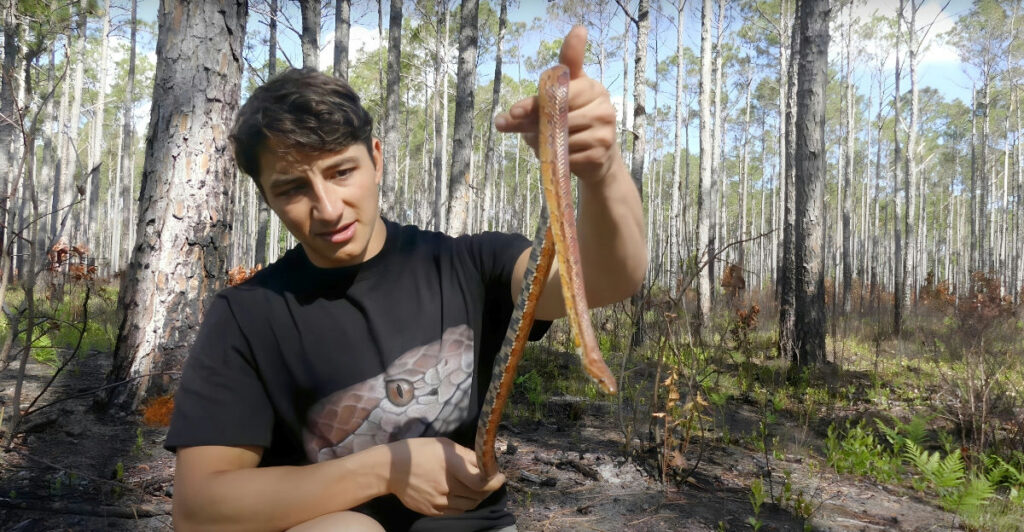
The East Coast of the United States is home to a remarkable variety of snakes, each with unique characteristics and habitats. From the coastal plains of the Carolinas to the wetlands of Florida, these rare and fascinating reptiles are an integral part of the region’s ecosystem. This article explores some of the most intriguing species found on the East Coast, highlighting their distinct traits and preferred habitats.
Carolina Pygmy Rattlesnake

The Coastal Plains of South Carolina are home to the pygmy rattlesnake, a smaller member of the rattlesnake family. Measuring just 14 to 30 inches, these snakes thrive in sandhills, floodplains, and mixed woods. Active from March to October, they are often found near freshwater sources such as marshes and ponds, hunting small prey like frogs and rodents.
Carolina Water Snake
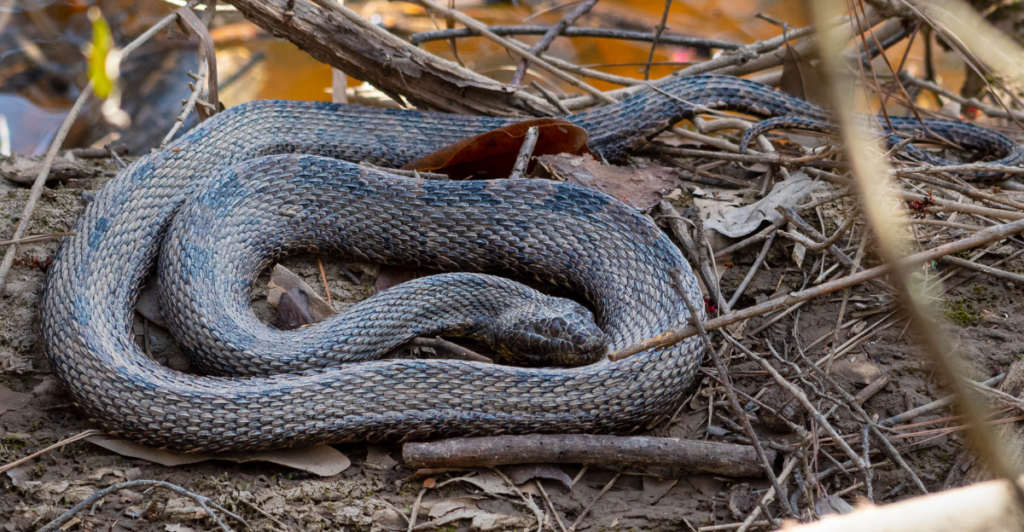
In North Carolina’s northern Coastal Plain, Piedmont, and mountain regions, the Carolina water snake inhabits a range of aquatic environments. This heavy-bodied water snake, a subspecies of the northern water snake, is darker than its inland counterparts. Though nonvenomous, it is often mistaken for venomous species like the cottonmouth.
Eastern Coral Snake
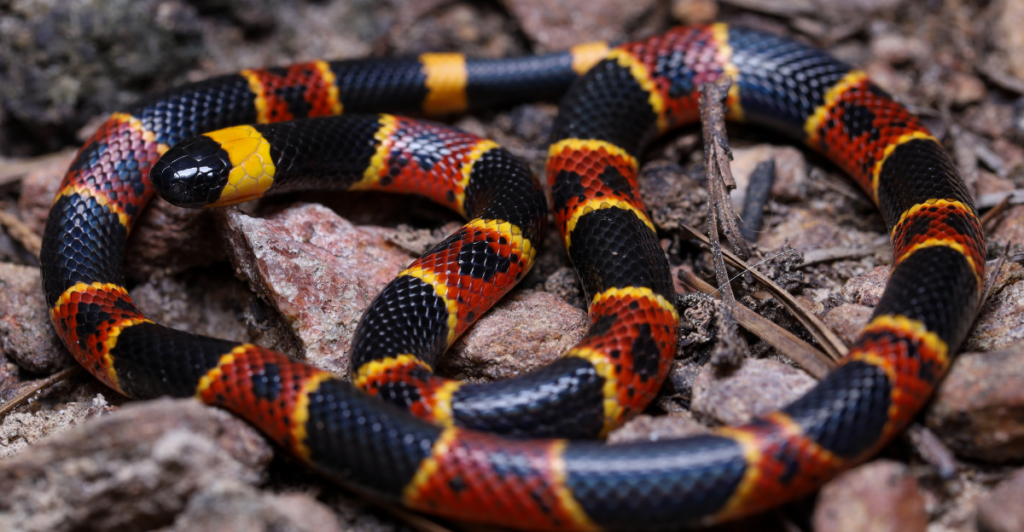
The strikingly colorful eastern coral snake is found in the southeastern United States, including parts of the Carolinas. These elusive snakes favor hammocks, sandy areas, and flatwoods with slash pines. They are known for their bright red, yellow, and black bands, which warn of their potent venom.
Eastern Ribbon Snake
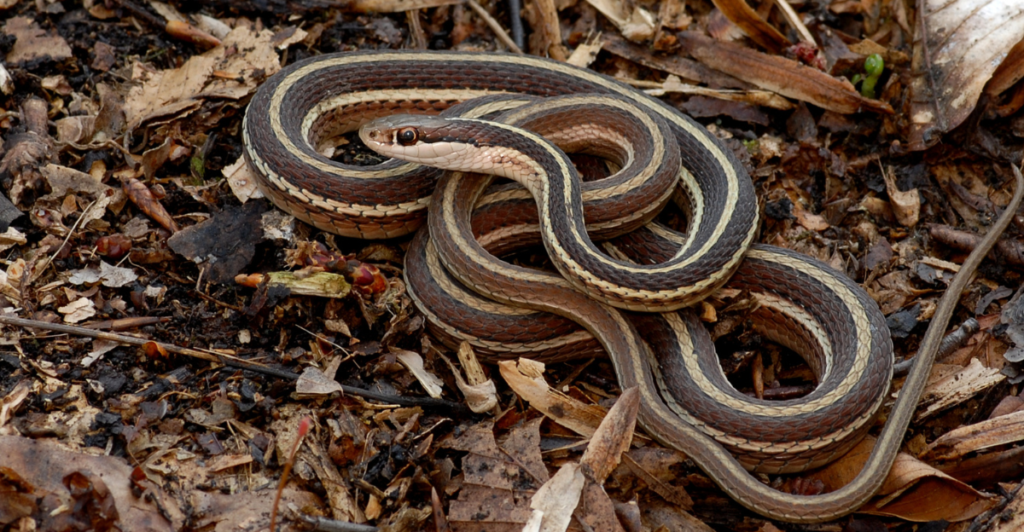
Eastern ribbon snakes are common in Georgia’s Piedmont and Coastal Plain, with their presence increasing closer to the coast. These slender, semi-aquatic snakes are often seen near bogs, lakes, and marshes, where they hunt small fish and amphibians. They are skilled swimmers, gliding along the water’s edge.
Eastern Worm Snake
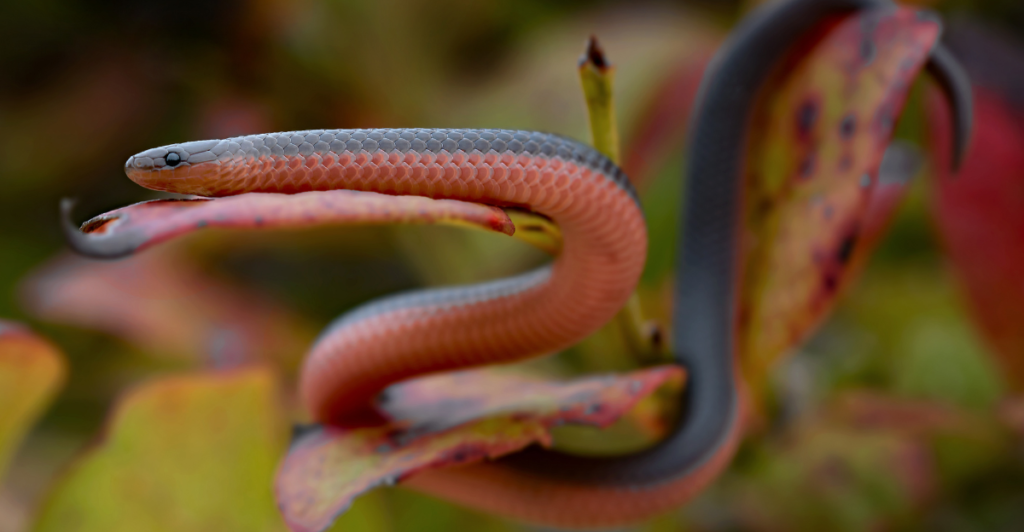
The diminutive eastern worm snake, measuring 7 to 11 inches, inhabits damp environments in the Piedmont region of South Carolina, Georgia, and New England. With its shiny brown scales and burrowing habits, this nonvenomous species poses no threat to humans and spends most of its time hidden underground.
Coastal Plain Milk Snake
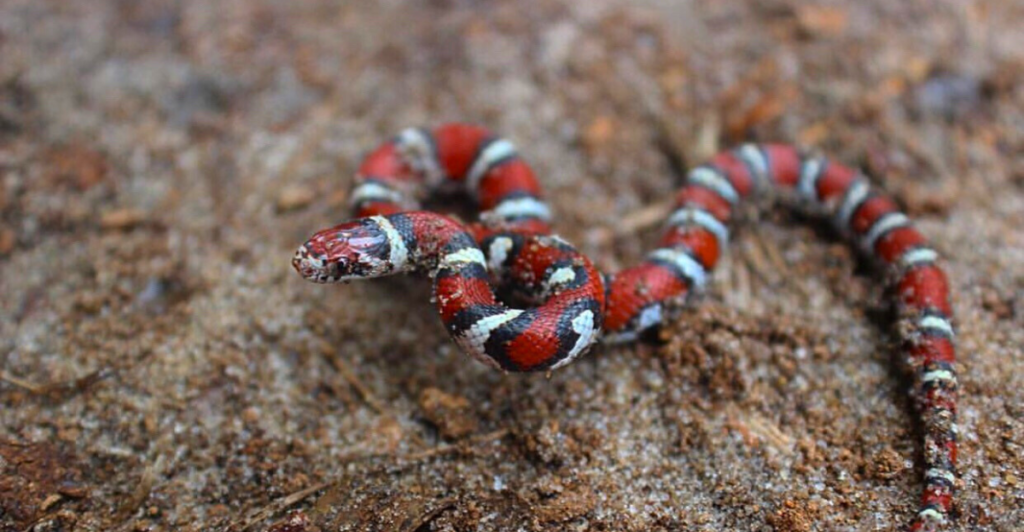
The Coastal Plain milk snake, regarded as a hybrid between the scarlet kingsnake and eastern milk snake, is renowned for its beautiful patterns and colors. Found in wooded areas, riverbanks, and even barns, its largest populations are concentrated in Maryland’s St. Mary’s and Calvert counties.
Rainbow Snake
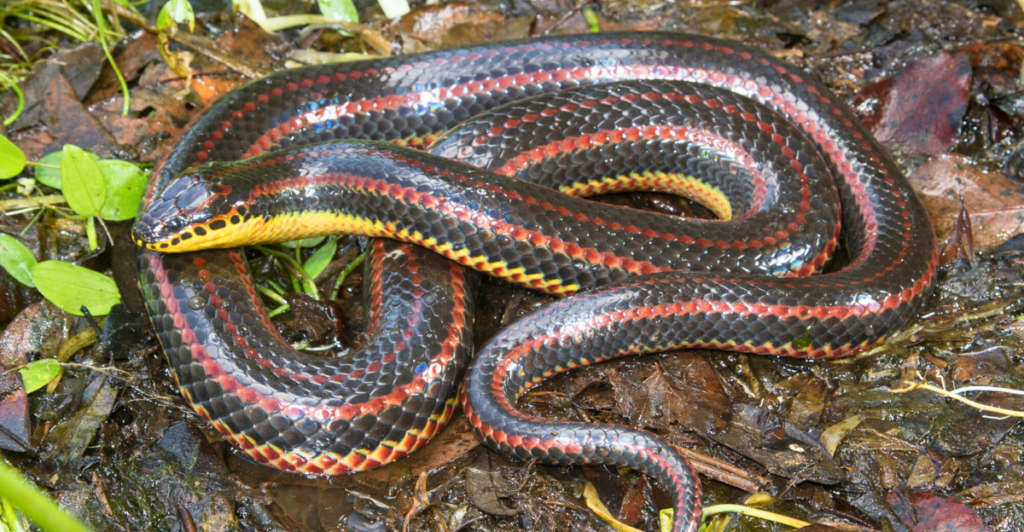
The rainbow snake, found along the Coastal Plain from southern Virginia to eastern Louisiana, is a strikingly colorful species that thrives in damp habitats. Growing up to five and a half feet long, these snakes prefer slow-moving water bodies. Once, they were also found near Lake Okeechobee in Florida, but they have since vanished from the area.
Eastern Mud Snake
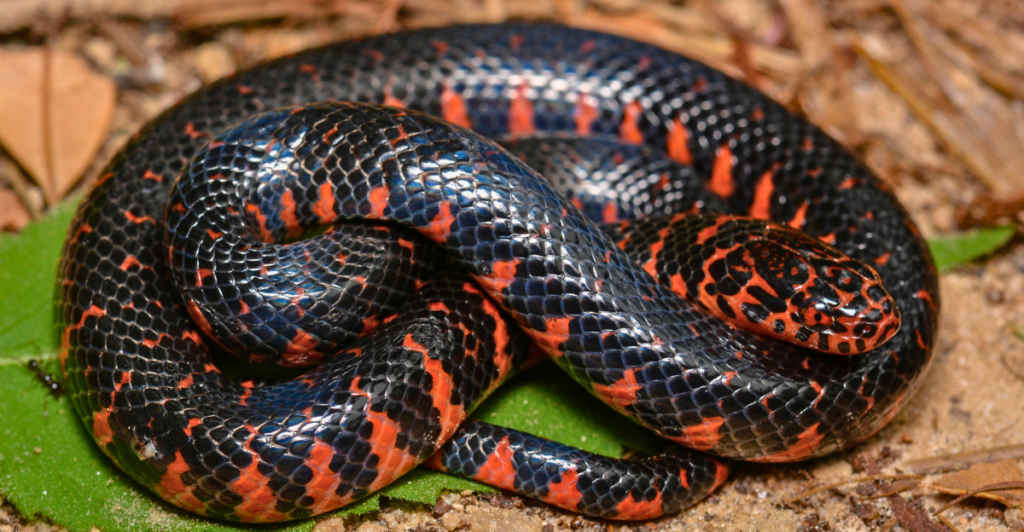
Eastern mud snakes inhabit the Coastal Plains of Georgia and South Carolina, favoring wetlands, marshes, and cypress swamps. Juvenile mud snakes often live in seasonal wetlands before migrating to permanent water sources as adults. Their elusive nature makes them a rare sight.
Florida Crowned Snake
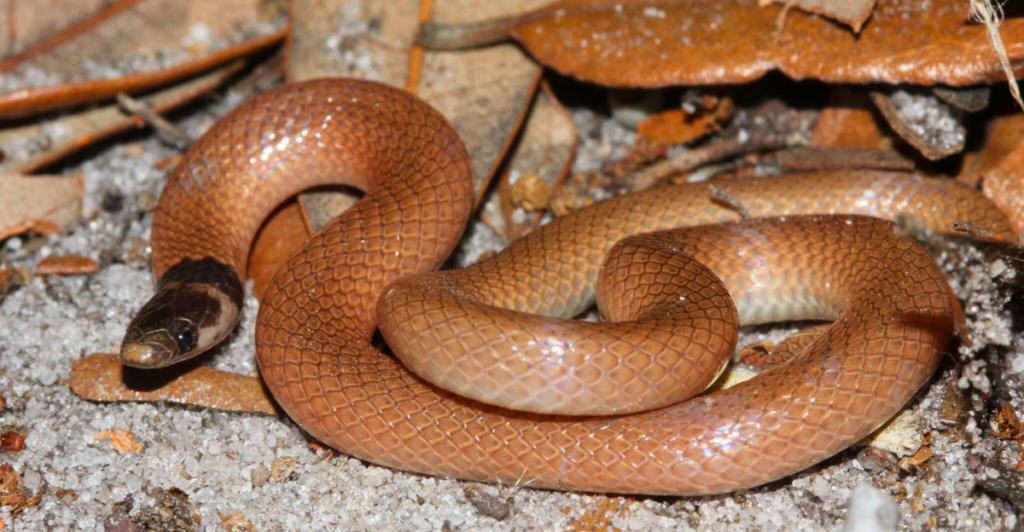
Florida crowned snakes, native to Florida’s pine flatwoods and dunes, are small, tan-bodied snakes with blackheads. These burrowing species thrive in sandy soils, where they hunt spiders, snails, and worms. Despite their name, they are not found in the Florida Keys or Panhandle.
Florida Banded Water Snake
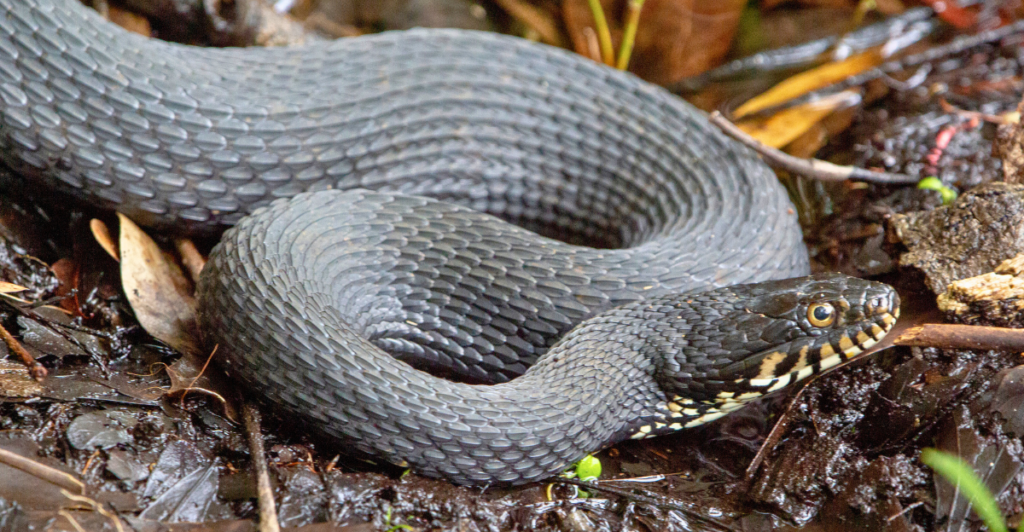
Florida-banded water snakes, often mistaken for venomous cottonmouths, are nonvenomous residents of the southeastern US coastal lowlands. Preferring damp areas like marshes and ponds, they are common in Florida, Georgia, and the Carolinas. Unfortunately, their resemblance to venomous species often leads to unnecessary harm.
Eastern Diamondback Rattlesnake
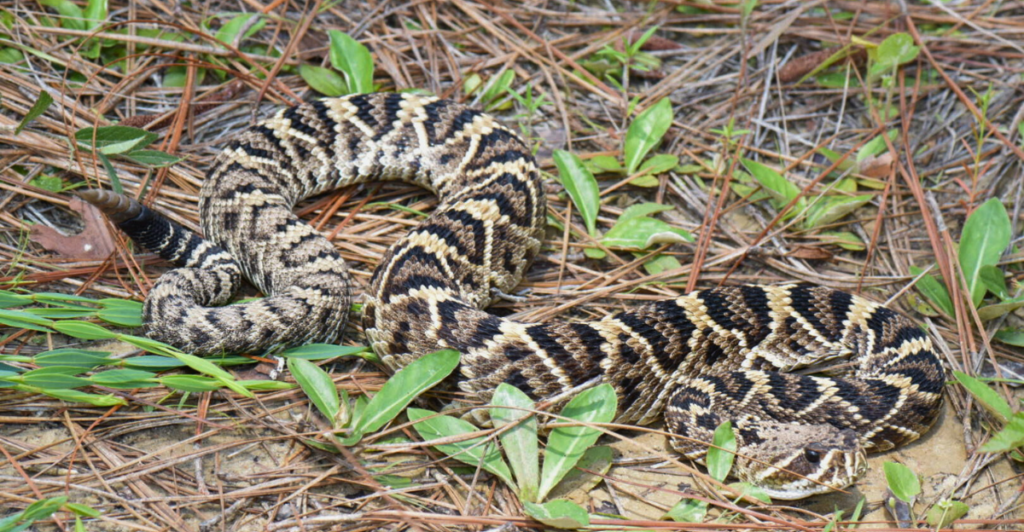
The eastern diamondback rattlesnake, the largest rattlesnake in North America, resides in the coastal regions of the Carolinas and Florida. Known for its venomous bite and striking diamond pattern, this snake prefers grasslands and sandy woodlands. Encounters are rare but potentially dangerous, warranting caution.
Eastern Indigo Snake
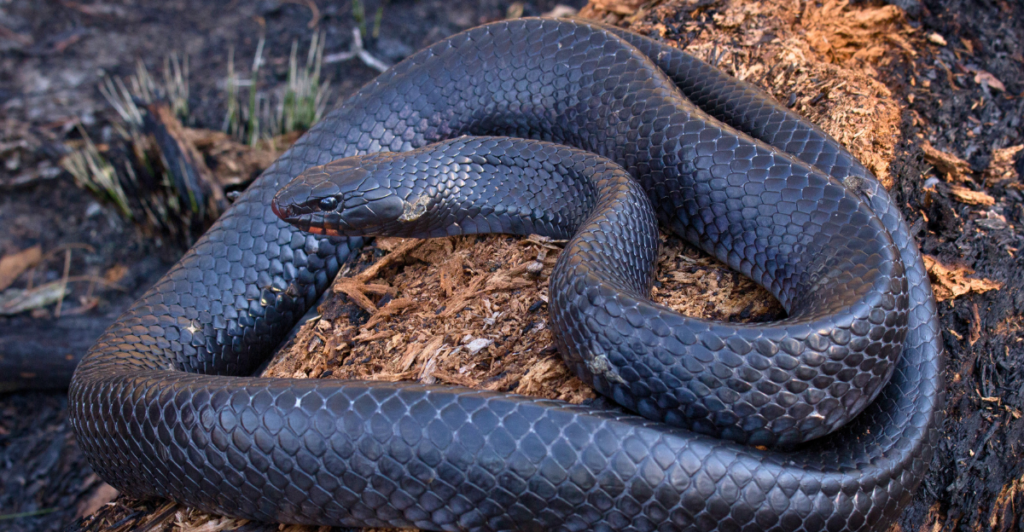
Eastern indigo snakes, the largest snake species in North America, are increasingly rare in northern Florida due to habitat loss. Measuring up to 7.7 feet, they are nonvenomous but play a crucial role in controlling rodent populations. Conservation efforts aim to protect this remarkable species from further decline.
Glossy Crayfish Snake
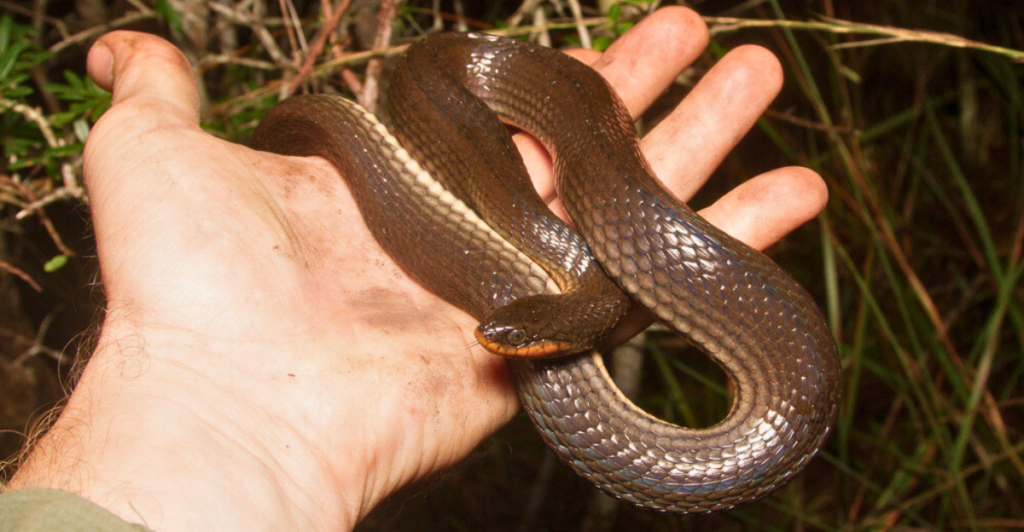
The glossy crayfish snake also called the “glossy swamp snake,” resides in the Coastal Plain from North Carolina to Texas. Preferring marshes and wetlands with dense vegetation, their shiny, keeled scales give them a distinct appearance. The East Coast’s snakes are a vital part of its biodiversity, each contributing uniquely to the ecosystem. While some species face threats from habitat loss and human activity, understanding and appreciating these creatures can help ensure their survival for generations to come.
Stay connected with us for more stories like this! Follow us to get the latest updates or hit the Follow button at the top of this article, and let us know what you think by leaving your feedback below. We’d love to hear from you!







